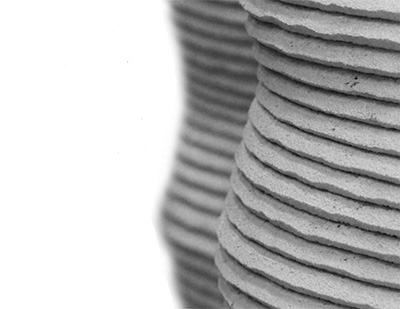
Graduation Project Smart materials in 3DPC
Application of smart materials in 3D printed Concrete Structures for Structural Health Monitoring
Structural Health Monitoring (SHM) – the ability to monitor and study the behavior of various parts of structures in terms of displacements, strains, stresses, etc. – is one of the most rapidly developing fields within the built environment. In this project, we will explore the applicability of using composites made by Carbon Nano-Tubes (CNTs) as smart materials to be used within structures for SHM. Piezoelectric and piezomagnetic smart materials are materials in which the mechanical behavior (i.e. deformation, strain, and stress) and the electro-magnetic behavior are coupled together. These materials are, therefore, the perfect candidate for applications within SHM – since by monitoring their electromagnetic behavior (using simple sensors), their mechanical behavior can be back-calculated. Hence, incorporation of these materials into the structure allows us to evaluate the mechanical behavior and state of the structure in a non-destructive manner.
On the other hand, 3D Concrete printing (3DCP) is also rapidly growing as an alternative for traditional casting of concrete, mainly due to the unmatched levels of freedoms in design that it offers to engineers. In particular, structures can now be designed with virtually any desired shape, using a combination of different materials, and also with multiple functionalities. Further, for the purposes of this project, 3DCP presents a suitable platform for incorporating smart materials within the structure in the desired locations. Accordingly, we will be able to design the structure and the sensors (i.e. smart materials) in an integrated fashion.
This M.Sc. project, which is defined as a joint project between the chairs of Applied Mechanics and Concrete Structures, will focus on experimental and numerical analysis of the behavior of simple 3D printed concrete structures (e.g. simply supported beams) which are reinforced with smart materials. Specifically, in order to evaluate the applicability of using smart materials for understanding and monitoring the mechanical behavior of the structure in a non-destructive fashion, we will tackle the following research questions:
- What is the effect of CNT content on enhancing mechanical behavior of 3DCP structures? Is there an optimum CNT concentration, i.e. what volume fraction of CNTs allows for better enhancing the mechanical response of the structure?
- What is the effect of CNT dispersion on mechanical behavior of 3DCP structures?
a. In a given CNT concentration, how can we improve the dispersion of CNTs and as aresult enhance mechanical response?
b. How can dispersion of CNTs be optimized? - At what concentration, can smart materials be used as sensors which will allow us to understand mechanical behavior of the material from electromagnetic responses?
- Can we derive any empirical understanding on the correspondence between electromagnetic behavior and (i) the mechanical load on the structure, and/or (ii) the health state of the structure?
- Can we study the coupling between the electromagnetic and mechanical behavior of smart materials using material models, developed within the chair of Applied Mechanics, to understand the relationship between electromagnetic response of the material and its mechanical condition?